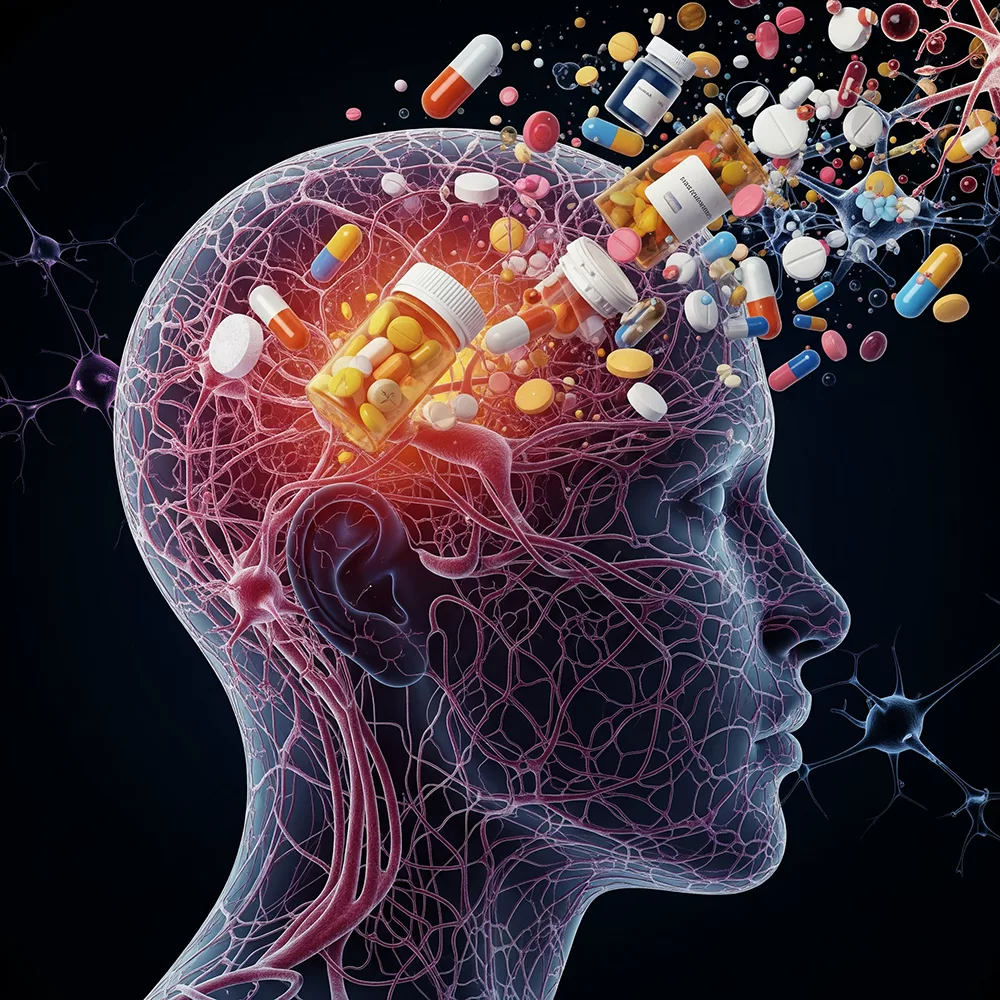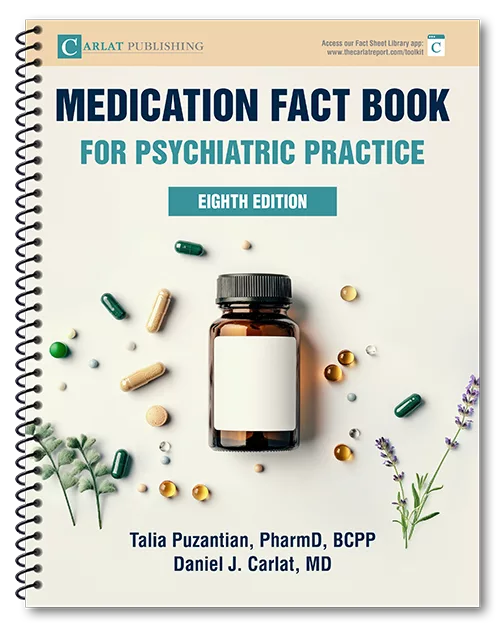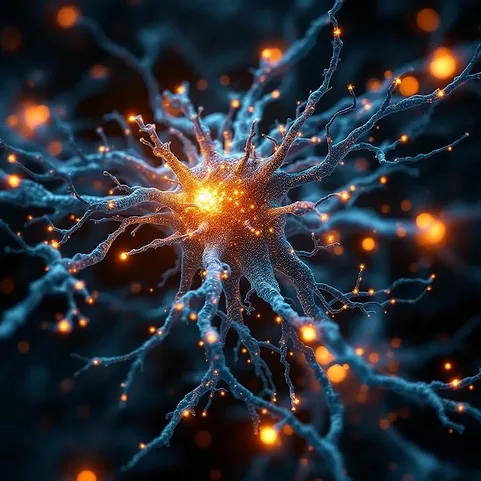GLP-1 Receptor Agonists in Addiction Treatment: The Next Big Thing or Just Hype?

Michael Weaver, MD, DFASAM. Professor and Medical Director, Center for Neurobehavioral Research on Addiction at the University of Texas Medical School, Houston, TX.
Noah Capurso, MD, MHS. Assistant Medical Director, Addiction Services Division, Connecticut Valley Hospital; Associate Clinical Professor of Psychiatry, Yale University; Editor-in-Chief, The Carlat Addiction Treatment Report.
Drs. Weaver and Capurso have no financial relationships with companies related to this material.
Addiction specialists have a variety of medications in their treatment arsenal, but response rates vary and significant gaps remain. This is especially true for stimulant and cannabis use disorders, which lack FDA-approved treatment options. The unmet need has driven interest in new agents like glucagon-like peptide-1 (GLP-1) receptor agonists. Originally developed for type 2 diabetes, and widely used for weight management, these medications have been getting press for their potential applications in addiction treatment (Szalavitz M. The breakthrough drug to conquer addiction: Ozempic? The New York Times. October 18, 2024). But are they right for your patients?
Understanding GLP-1 and its role in addiction
GLP-1 is a hormone released by the gut after eating. Its main function is to regulate blood glucose levels, primarily by stimulating insulin release from the pancreas. GLP-1 receptors also exist in the nucleus accumbens and ventral tegmental area, brain regions critical to reward and craving, suggesting possible applications in treatment of substance use disorders (SUDs). Additionally, GLP-1 receptor agonists promote satiety and improve glucose homeostasis, which may indirectly impact substance cravings and consumption behaviors.
GLP-1 receptor agonists, like semaglutide (Ozempic, Wegovy), exenatide (Bydureon), and liraglutide (Victoza), are already established treatments for diabetes and obesity. But these possible effects on reward processing have fueled interest in their potential as addiction treatments as well. The research is still in its early stages, with most evidence coming from preclinical studies and small human trials, but some of the results are promising.
GLP-1 agonists for AUD
AUD is the most extensively studied SUD in GLP-1 research. Preclinical studies have demonstrated that GLP-1 receptor agonists reduce alcohol consumption and alcohol-induced conditioned place preference—a standard measure of substance reward—in rodents and primates. However, these studies have shown some variability depending on the agent used and the dosing regimen, suggesting that not all GLP-1 receptor agonists are equally effective for AUD (Bruns N et al, Pharmacol Res 2024;207:107312).
Human studies have provided some intriguing results:
Anecdotal hints of possible efficacy came first from social media posts and patient reports, where individuals using GLP-1 agonists for weight loss noted reductions in alcohol cravings and consumption (Bremmer MP et al, J Stud Alcohol Drugs 2024;85(1):5–11).
A small retrospective study found that patients prescribed semaglutide for weight loss experienced reduced symptoms of AUD (Richards JR et al, J Clin Psych 2024;85(1):23m15068).
A larger epidemiological study revealed that patients treated with semaglutide for obesity had a 50% lower risk of developing AUD compared to those prescribed other antiobesity medications (Wang W et al, Nature Comm 2024;15(1):4548).
A recent large observational cohort study showed that semaglutide and liraglutide were associated with decreased risk of hospitalization related to alcohol and other substance use in individuals with AUD and comorbid obesity or type 2 diabetes (Lahteenvuo M et al, JAMA Psychiatry 2025;82(1):94–98).
RCTs are now underway, with some already completed. One RCT found that exenatide significantly reduced drinking in individuals with AUD and obesity, but not in those without metabolic comorbidities (Klausen MK et al, JCI Insight 2022;7(19):e159863). These findings suggest that GLP-1 receptor agonists may be particularly effective for individuals like Maria, whose AUD is accompanied by obesity or type 2 diabetes.
GLP-1 agonists for other SUDs
Opioids
Preclinical studies of GLP-1 receptor agonists for opioid use disorder (OUD) have shown some promise, particularly liraglutide (Douton JE et al, Addict Biol 2022;27(2):e13117).
A small clinical trial showed that liraglutide reduced heroin cravings in humans, although this was an exploratory study and requires confirmation in larger samples (www.tinyurl.com/bde6h7cp).
One recent epidemiologic study examined health records of over 500,000 people with OUD and found that those prescribed a GLP-1 receptor agonist had approximately half the rate of opioid overdoses compared to those without such prescriptions (Qeadan F et al, Addiction 2024;1–15).
Another study found that patients with OUD and type 2 diabetes had an approximately 40%–70% lower risk of overdose if they were prescribed semaglutide compared to another class of diabetes medication (Wang W et al, JAMA Netw Open 2024;7(9):e2435247).
StimulantsPreclinical research has shown reductions in cocaine self-administration in animals, but these effects have so far not translated to humans. The one clinical trial that has been completed found that exenatide had no impact on cocaine use or subjective euphoria after using cocaine (Angarita G et al, Drug Alcohol Depend 2021;221:108614).
Tobacco
Two RCTs have been completed investigating GLP-1 receptor agonists for smoking cessation—and results have been mixed.
In one trial, exenatide added to nicotine patches improved abstinence rates, reduced withdrawal symptoms, and helped prevent post-cessation weight gain (Yammine Y et al, Nicotine Tob Res 2021;23(10):1682–1690).
In the other trial, dulaglutide (Trulicity) did not improve smoking outcomes when added to varenicline (Lengsfeld S et al, EClinicalMedicine 2023;57:101865).
Interestingly, the former trial recruited participants with prediabetes or BMI>25 whereas the latter trial included participants of all weights, again suggesting that GLP-1 receptor agonists may only be effective for participants with metabolic comorbidities.
Cannabis
Cannabis use disorder (CUD) remains the least studied SUD in this context, but early data have been promising—one retrospective chart review of nearly 100,000 patients with obesity found that a semaglutide prescription decreased the incidence of CUD by approximately 50% (Wang W et al, Molecular Psychiatry 2024;29:2587–2598).
Putting it all together
The growing enthusiasm for GLP-1 receptor agonists in addiction medicine is understandable given the promising preclinical and early clinical data, as well as the widespread media attention. However, many critical questions remain unanswered. For instance, what is the optimal dosing or duration of therapy for SUDs? Are the effects sustainable over time, or is return to substance use likely after discontinuing the medication? Most importantly, which patients are the best candidates for these medications?
Currently, the strongest evidence supports the use of GLP-1 receptor agonists as adjunctive treatments for patients like Maria, namely those with AUD and coexisting obesity or diabetes. This is where clinicians might consider using these medications as part of a comprehensive treatment plan. However, for other SUDs—such as opioids, stimulants, nicotine, and cannabis—the evidence remains preliminary. While the research is promising, it is not yet robust enough to recommend GLP-1 receptor agonists as part of routine addiction treatments outside of AUD with metabolic comorbidities.


Newsletters
Please see our Terms and Conditions, Privacy Policy, Subscription Agreement, Use of Cookies, and Hardware/Software Requirements to view our website.
© 2025 Carlat Publishing, LLC and Affiliates, All Rights Reserved.


_-The-Breakthrough-Antipsychotic-That-Could-Change-Everything.webp?t=1729528747)



